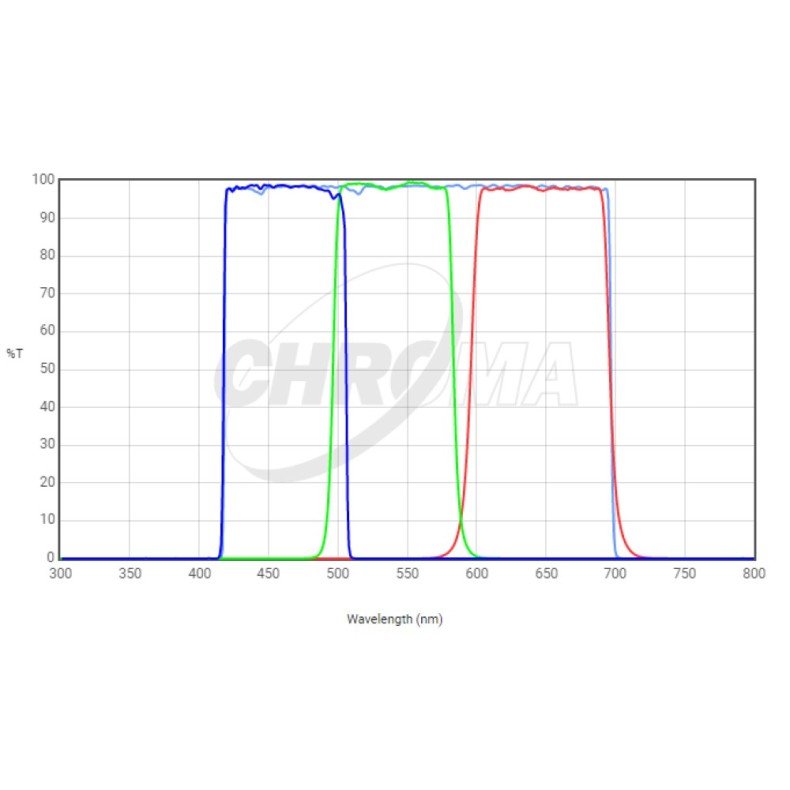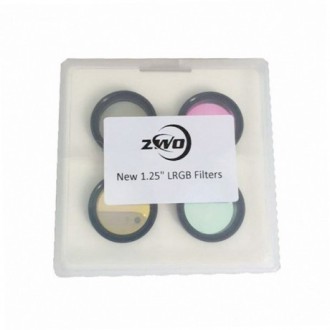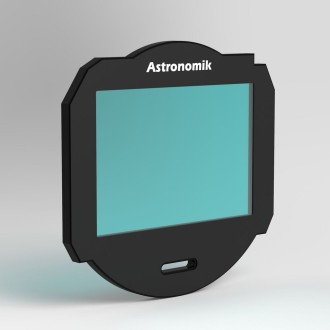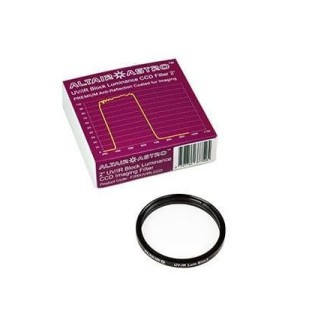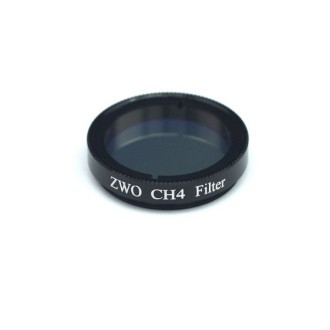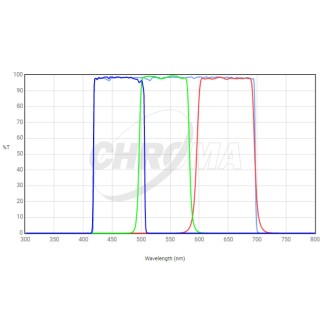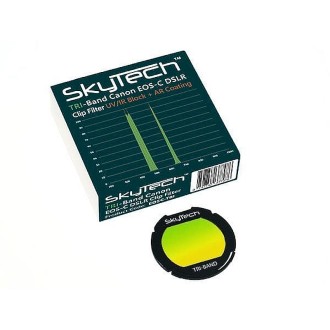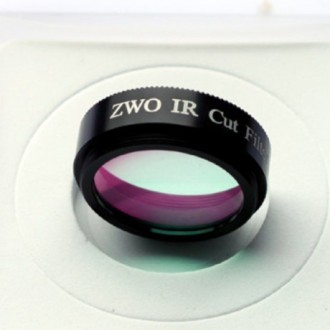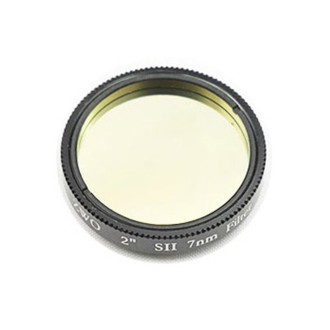Deliver it 19/26 days

LRGB Chroma Filter Set 1.25" Chroma Filter Set 1.25
LRGB filter set - Astrophotography with monochrome CCD cameras.
| Carrier | Description | Estimated Delivery | ||
|---|---|---|---|---|
 |
Home delivery - International | Home delivery - International |
Friday, 9 May - Friday, 16 May |
|

Home delivery - International
Home delivery - International
Estimated delivery:
Friday, 9 May - Friday, 16 May
Four filters for one color image: With the LRGB filter set you can take color pictures of the sky with a monochrome chip. Monochrome Astro CCD cameras illuminate deep sky objects with very high resolution, as all pixels act together in one image. With a color CCD chip, resolution is lost because ⅓ of the pixels have color filters.
For a very high resolution image it is necessary to use a set of LRGB filters and a monochrome camera.
L - Luminance filter
lets through all visible light and blocks UV and IR rays, so that all information about the object reaches the observer.
RGB - Each filter has its own special purpose
Each of these letters represents the color they highlight. The colors we see are formed from three basic colors: red, green and blue. Our eyes also mix the colors with RGB receptors so that we are able to recognize all shades.
The four images from the LRGB channels are combined to create the final color image.
Tip: We recommend using the filter wheel Omegon to take pictures with these filters and to be able to switch between them in a matter of seconds.
All the advantages:
- LRGB filter set for color photos with monochrome CCD cameras
- Full resolution thanks to four external filters
- Scratch-proof coating
- Neutral colors on deep-sky objects and planets
SPECIFICATIONS
Capability
Connection (telescope side): 1,25
Frame: 1.25"
Support material: Aluminum
Overall
Type: Filter
Construction type: L-RGB filters
Applications
Suitable for photographic purposes: yes
All transmission and blocking (OD) data are actual spectra measured from representative production batches. Spectra vary slightly from batch to batch. OD values greater than 6 may appear noisy because such evaluations push the resolution limit of low light level measurements.

